Lao PDR - Caries prevalence and some caries related factors for 12-year-old children from Vientiane and Luang Prabang provinces
Lao PDR - Caries prevalence and some caries related factors for 12-year-old children from Vientiane and Luang Prabang provinces
by Gisela Ladda Tayanin, Faculty of Odontology, University of Malmö, Sweden
Introduction
In 1999, fifty samples of drinking water from different water sources from 4 provinces in Laos were analysed for fluoride concentration. The survey revealed generally low fluoride concentrations in the drinking waters in these provinces (0.01 F-ppm to 0.51 F-ppm) more details: Estimating the fluoride concentration in the drinking waters in some provinces of Lao People's Democratic Republic.
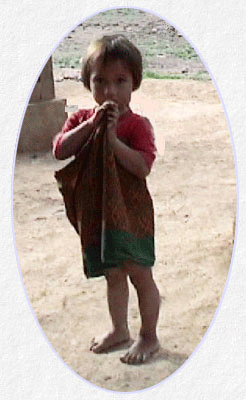
Rationale and Background
Laos is a rapidly developing nation. Oral health information for Laos is scant. The only data are from a national survey carried out in 1992 (1). This study showed that the DMFT for 12-year-olds was 2.0 and the DMFT varied in provinces/areas from 1.1 to 3.9. As very few data on caries prevalence and caries related facts and figures are available for Laos, it would be interesting to gather detailed information on caries related factors.

Children are gathering around us
Aims of the Project
- To analyse the caries situation of 12-year-olds in Laos in 2 provinces
- To record the consumption patterns of caries inducing products like sugar-containing snacks and sweet drinks, in this age group
- Interview the children on their knowledge of oral health preventive measures and oral health care
- Record the mutans streptococci and lactobacilli in saliva
- To measure the saliva secretion and buffer capacity in this group


Project Outline
A total of hundred 12-year-old children from the Vientiane and Luang Prabang provinces were studied. Details on the 100 children investigated are given below.
Selected sites in Laos and number of children
| Provinces/Villages | Boys | Girls | Total |
| Vientiane Municipality total | 23 | 27 | 50 |
| - Ban Sokpaluang School | 9 | 11 | 20 |
| - Dongsiengdii Village | 2 | 10 | 12 |
| - Phonkeo Village | 12 | 6 | 18 |
| Luang Prabang total | 23 | 27 | 50 |
| - Posy Village | 14 | 17 | 31 |
| - Lakpad Village | 9 | 10 | 19 |

All children were interviewed about oral health habits, diet and intake of snacks. Chief dentists and local dentists carried out the interviews in the local language. The study was carried out in villages and one school in co-operation with provincial chief dentists and the local dentists. Each child was examined for caries according to WHO standards (2) by the author. Saliva was collected from each child and mutans streptococci, lactobacilli, salivary secretion and buffer capacity were measured.
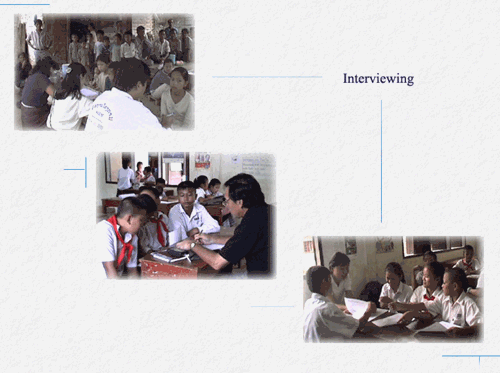

Project Outcome
The caries prevalence was high showing a DMFT of 4.6 and only 9% of the children were caries free, the D component contributed mostly to the DMFT and the Significant Caries Index (SiC Index) was DMFT 8.0.
Mean DMFT and DMFS in the 2 provinces and at the different sites
| Province/Villages | Mean number of teeth | Mean number of tooth surfaces | ||||||
| D | M | F | T | D | M | F | S | |
| Vientiane Municipality | 4.59 | 0.01 | 0.01 | 0.01 | 6.44 | 0.05 | 0.03 | 6.52 |
| Luang Prabang | 4.59 | 0.01 | 0.01 | 4.61 | 6.44 | 0.05 | 0.03 | 6.52 |
| Total for both provinces | 4.59 | 0.01 | 0.01 | 4.61 | 6.44 | 0.05 | 0.03 | 6.52 |
* tooth with fillings and recurrent caries were counted as 'Decayed'- D
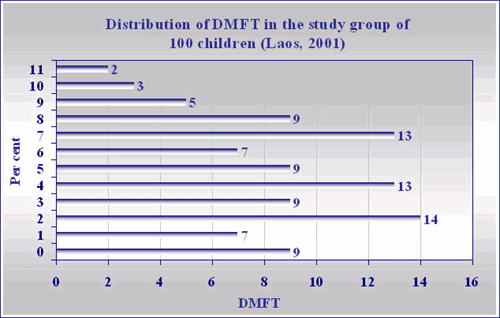
Note: 91 subjects had decayed teeth. In 83 of them, caries was found in the molars' occlusal surfaces only. In these 83 children, there were 119 decayed molar surfaces in the lower jaw and 77 in the upper jaw. First molars were more affected than the second molars: 43 children had decay both in the first and the second molars. 29 children had decay only in first molars and 11 only in the second molars.
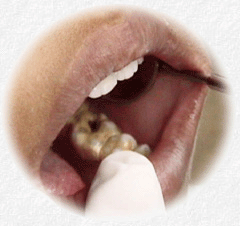
Regarding caries related factors, 25% of the children were in the high mutans class, 31% of the group had high or very high Lactobacilli scores and 84 - 88% took local sweet snacks, chips and sweet drinks every day.

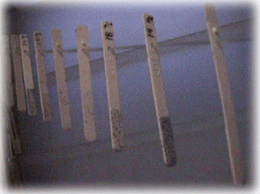
Mutans strips being dried
Strip mutans classes and DMFT distribution in the 12-year-old children.
| DMFT | Strip mutans class | Total | |||
| 0 | 1 | 2 | 3 | ||
| 0 | 5 | 2 | 1 | 1 | 9 |
| 1 | 2 | 2 | 3 | 0 | 7 |
| 2 | 4 | 2 | 5 | 3 | 14 |
| ≥3 | 9 | 5 | 35 | 21 | 70 |
| Total | 20 | 11 | 44 | 25 | 100 |
Relation between DMFT and Strip mutans classes in 12-year-old children
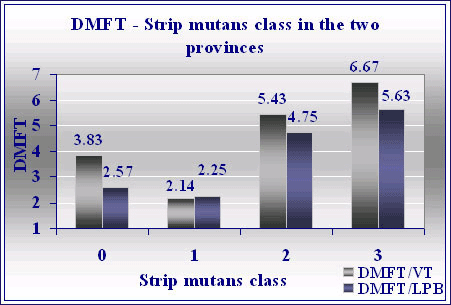
Lactobacilli scores and DMFT distribution in the 12-year-old children.
| DMFT | Lactobacilli score |
Total | ||||
| 0 | 1 | 2 | 3 | 4 | ||
| 0 | 3 | 4 | 2 | 0 | 0 | 9 |
| 1 | 1 | 4 | 1 | 1 | 0 | 7 |
| 2 | 3 | 5 | 3 | 2 | 1 | 14 |
| ≥3 | 9 | 13 | 21 | 17 | 10 | 70 |
| Total | 16 | 26 | 27 | 20 | 11 | 100 |
Relation between DMFT and Lactobacilli scores in 12-year-old children.
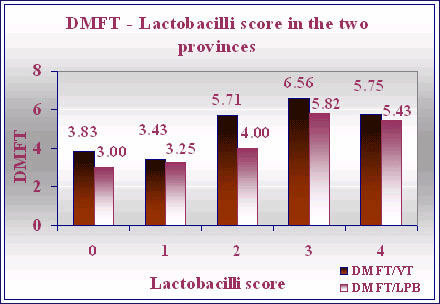


Salivary test
Dentobuff classes and DMFT (+SD) in relation to salivary buffer capacity
.
| Area |
Adequate
|
Medium
|
Low
|
|
Vientiane Municipality
|
41 | 5 | 4 |
|
Luang Prabang
|
32 | 12 | 6 |
|
Total |
73 | 17 | 10 |
|
Mean DMFT |
4.34 + 2.85 | 4.18 + 3.11 | 7.30 + 2.16 |
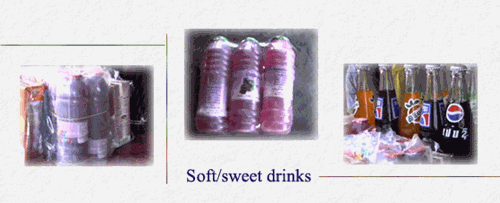
Number of children and the frequency of intake of various caries inducing products
| Frequency | Snack* | Chips | Soft/sweet drinks | Candy | Gum (sugar) | Chocolate | Cake |
| Occasionally | 9 | 13 | 14 | 3 | 3 | 4 | 4 |
| Every day | 19 | 9 | 18 | 6 | 4 | 1 | 0 |
| 2-3 times/day | 46 | 50 | 39 | 33 | 22 | 12 | 2 |
| > 3 times/day | 14 | 13 | 13 | 14 | 11 | 10 | 0 |
| Total - consumers | 88 | 85 | 84 | 56 | 40 | 27 | 6 |
| Total - non-consumers | 12 | 15 | 16 | 44 | 60 | 73 | 94 |
*Snack - Local sweet snacks
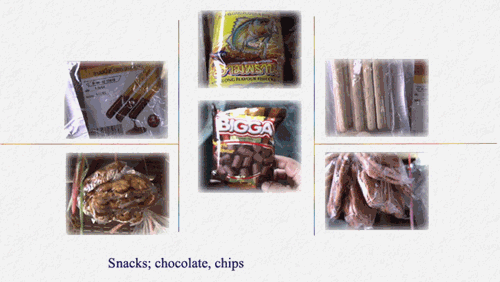
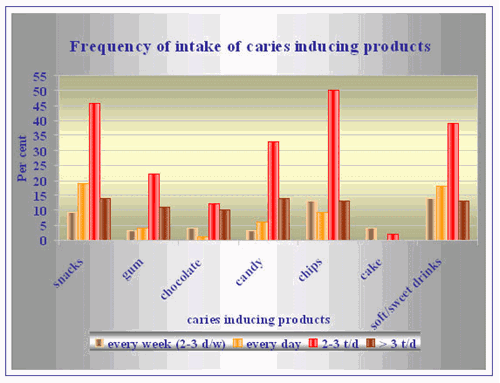
Relation between DMFT and Strip mutans classes of 12-year-olds in different countries*
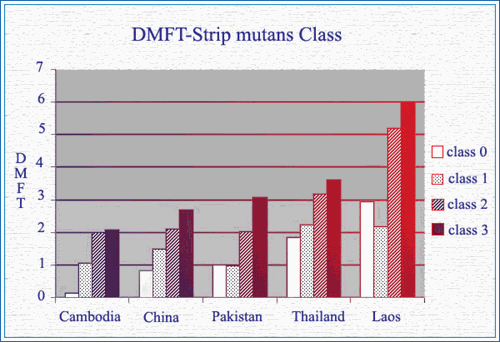
*References:
- Cambodia: Bratthall D, Khim S P, Durward C S. Dental caries and prevalence of mutans streptococci in a group of Cambodian children. Community Dent Oral Epidemiol 1993; 21: 174-175.
- China: Shi Y, Barmes D, Bratthall D, Leclerq M-H. WHO pathfinder caries survey in Beijing extended with data for prevalence of mutans streptococci. International Dental Journal 1992; 42: 31-36.
- Pakistan: Maher R, Khan A, Rahimtoola S, Bratthall D. Prevalence of mutans streptococci and dental caries in Pakistani children. J Pak Med Assoc 1992; 42: 213-5.
- Thailand: Songpaisan Y, Serinirach R, Kuvatanasuchati J, Bratthall D. Mutans streptococci in a Thai population: relation to caries and changes in prevalence after application of fissure sealants. Caries Res 1994; 28: 161-8.
- Laos: Present survey.

Children pumping drinking water at Lakpad village
Conclusion
Taking into consideration the high caries prevalence, the mutans streptococci distribution, the frequent intake of sweets and also the relatively low fluoride concentration in the drinking water, oral health preventive programmes are indicated to prevent a possible caries epidemic in Laos in the future.
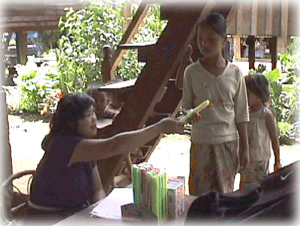
A local dentist gave tooth brushes and/or toothpaste to children
References
- Phommavongsa K. Primary Oral Health Care Programme in Laos. Publication of the Chief of Dental Service, Mahosot Hospital, Vientiane, 1992.
- World Health Organization (1997): Oral Health Surveys, Basic Methods. 4th ed. World Health Organization, Geneva.
Acknowledgements
Heartfelt thanks to Dr K Phommavongsa, Chief of Dental Service, Mahosot Hospital, Vientiane, Dr Sangprachan H, Chief of Dental Service, Dr Phetsamone, Dr Veeravone, and Dr Somjid, Provincial Hospital, Luang Prabang, for being generously helpful, in many, many ways...
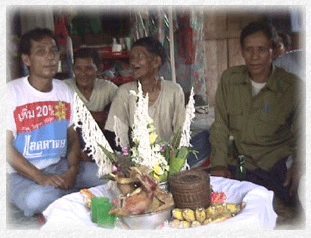
The villagers prepared a ceremony to welcome the team and to thank for helping their children
all photos by D. Tayanin, in co-operation with Prof. Dr D. Bratthall and Dr J. R Stjernswärd
